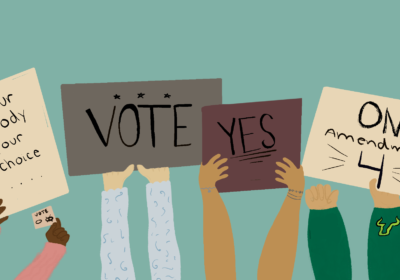US needs clear, federal LGBT non-discrimination laws

ORACLE PHOTO/ADAM MATHIEU
Since his repeal of the infamous Don’t Ask Don’t Tell policy in 2011, which allowed gays, lesbians and bisexuals to openly serve in the military, President Barack Obama made a long-awaited move to protect the LGBT community.
Last Monday, Obama announced a plan to sign an executive order to bar federal contractors and subcontractors from discriminating against employees based on sexual orientation and gender identity. According to Politico, the executive order would impact 28 million workers.
Congress has delayed voting on a similar measure, which would make Obama’s executive order unnecessary. The Employment Non-Discrimination Act (ENDA) would have had broader protections than the executive order and was passed by the Senate, but has not made it past the Republican-dominated House.
Whether Obama decided to issue the order to motivate Congress to move or to quicken the pace himself, explicit protection is needed to promise a non-discriminatory environment for all workers, no matter the sexuality or gender they identify with.
Republican Speaker of the House John Boehner suggested the protections already exist under other laws and will not take ENDA to a vote. According to an article by Slate addressing this, Title VII of the Civil Rights Act of 1964 protects against sex discrimination, which some believe already includes anti-gay and anti-trans discrimination.
Still, crucial protection for 28 million people should be secured by more than an inference. Even though some court rulings have already considered Title VII as a protection against anti-gay discrimination, as the Slate article states, one shouldn’t have to rely on a technicality or an insinuation for protection.
Currently, only 17 states and the District of Columbia have full protection against sexual orientation and gender identity discrimination, according to the American Civil Liberties Union. Only three have protection against sexual orientation discrimination.
The LGBT community cannot afford to lack federal protection in a majority of the country, especially with how widespread discrimination is.
According to a report by UCLA’s Williams Institute, 21 percent of LGBT employees faced discriminations in hiring, promotions and pay last year. A shocking 47 percent of transgender employees have dealt with similar discriminations.
Florida, unfortunately, is among the majority of the country, as it lacks statewide protection from discrimination against both sexual orientation and gender identity.
Nadine Smith, executive director of Equality Florida, Florida’s largest civil rights organization for the LGBT community, told the Miami Herald local ordinances are the primary protection against sexual orientation or gender identity discrimination.
A study by Equality Florida and the Equality Federation Institute shows, out of the approximate 536,000 LGBT adults in the state, 62 percent could be fired based on their gender identity and half for their sexual orientation.
According to the study, 38 percent of Floridians are covered by protections against both sexual orientation and gender identity discrimination in the city or county they live in. Tampa is among these locations.
Protection against discrimination should extend to workers throughout the entire country and shouldn’t depend on where one lives or an assumption based on existing laws. Transparent discrimination protections would undeniably represent the LGBT community, and with the ENDA frozen in Congress, an executive order would not only be the next best step, but one desperately needed and long overdue.
Isabelle Cavazos is a junior majoring in English and Spanish.






